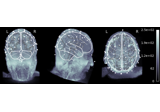mne.channels.read_custom_montage#
- mne.channels.read_custom_montage(fname, head_size=0.095, coord_frame=None)[source]#
Read a montage from a file.
- Parameters:
- fnamepath-like
File extension is expected to be:
'.loc'or'.locs'or'.eloc'(for EEGLAB files),'.sfp'(BESA/EGI files),'.csd','.elc','.txt','.csd','.elp'(BESA spherical),'.bvef'(BrainVision files),'.csv','.tsv','.xyz'(XYZ coordinates).- head_size
float|None The size of the head (radius, in [m]). If
None, returns the values read from the montage file with no modification. Defaults to 0.095m.- coord_frame
str|None The coordinate frame of the points. Usually this is
"unknown"for native digitizer space. Defaults to None, which is"unknown"for most readers but"head"for EEGLAB.New in version 0.20.
- Returns:
- montageinstance of
DigMontage The montage.
- montageinstance of
See also
Notes
The function is a helper to read electrode positions you may have in various formats. Most of these format are weakly specified in terms of units, coordinate systems. It implies that setting a montage using a DigMontage produced by this function may be problematic. If you use a standard/template (eg. 10/20, 10/10 or 10/05) we recommend you use
make_standard_montage(). If you can have positions in memory you can also usemake_dig_montage()that takes arrays as input.
Examples using mne.channels.read_custom_montage#

EEG source localization given electrode locations on an MRI